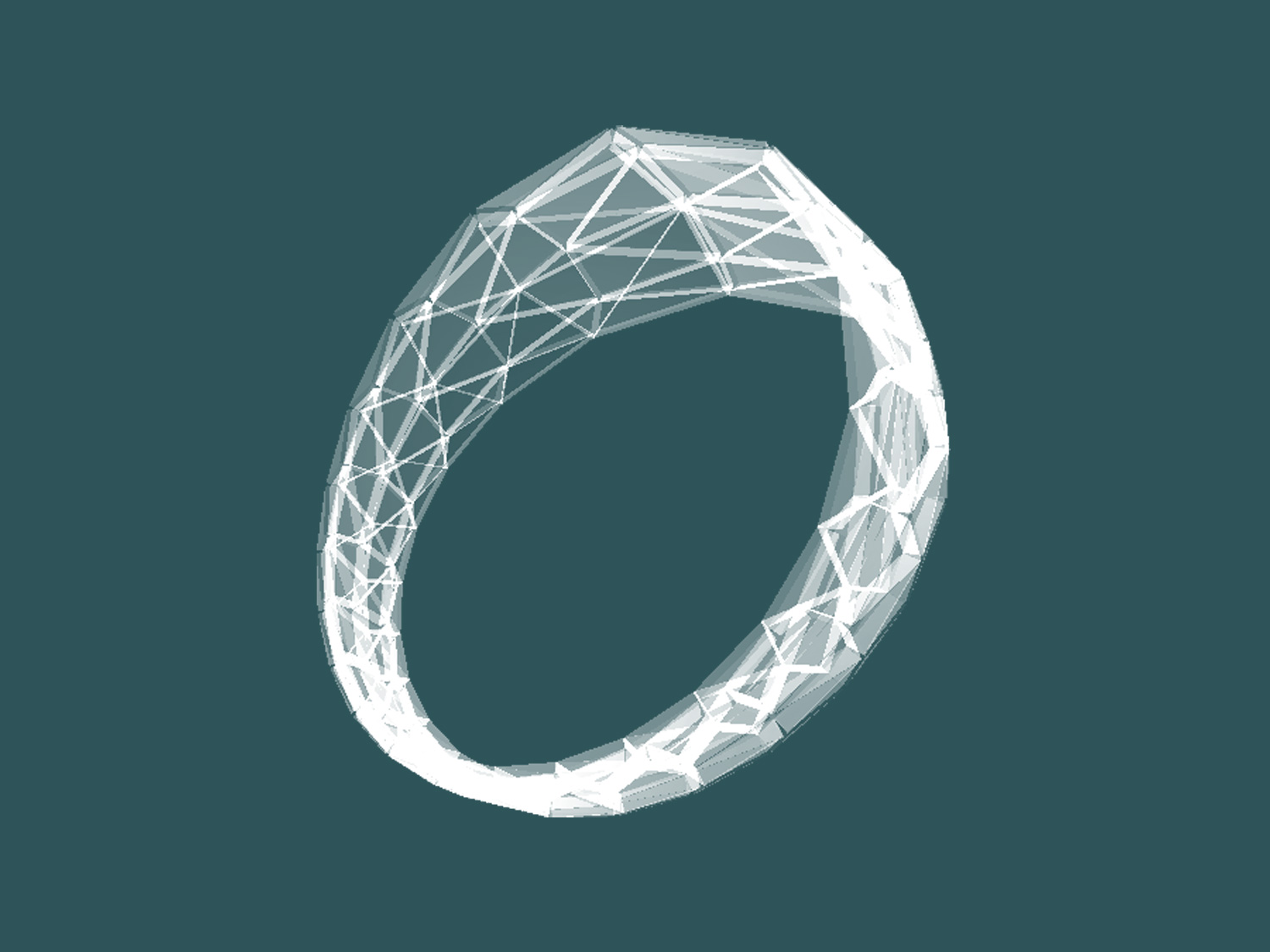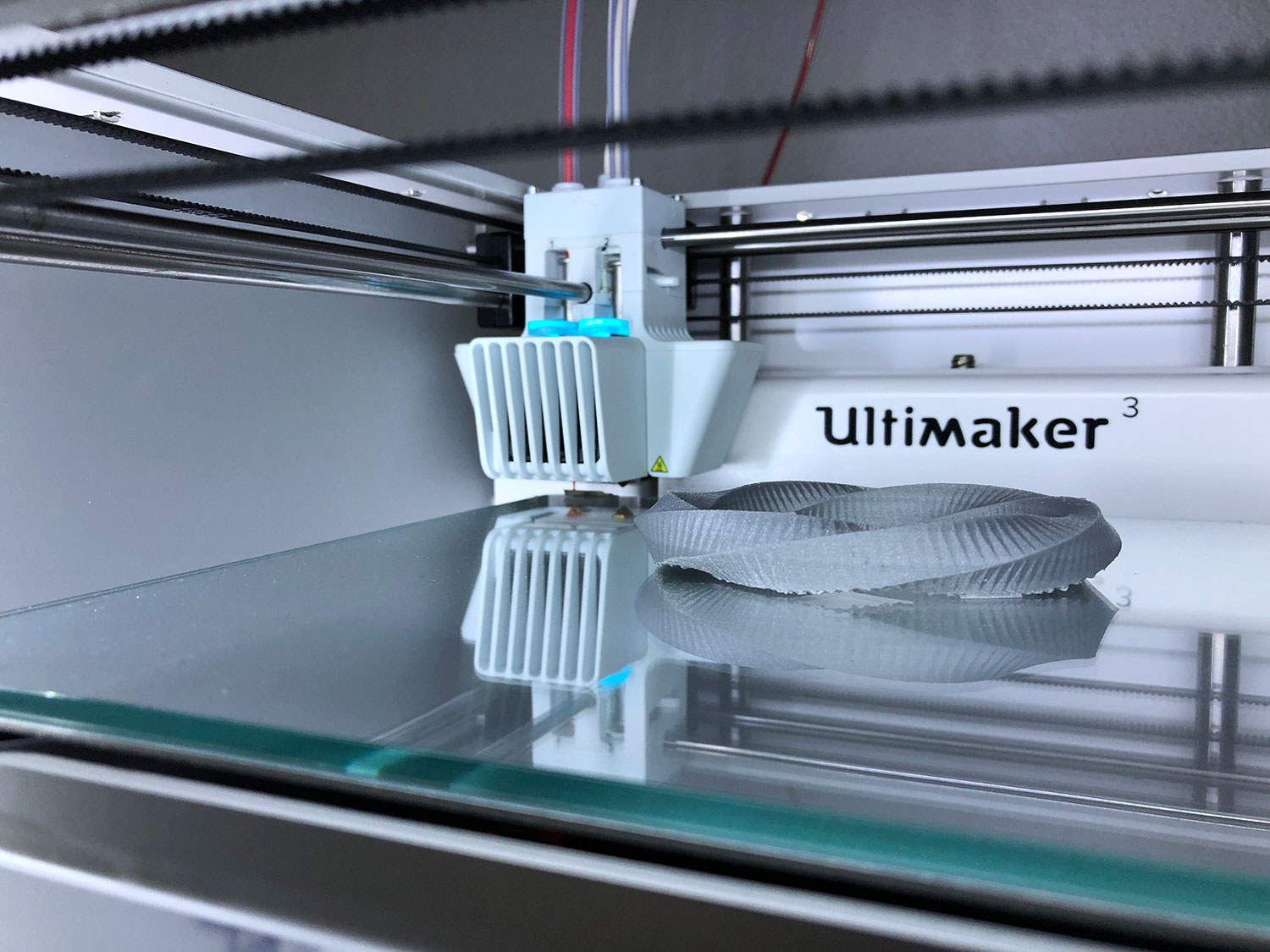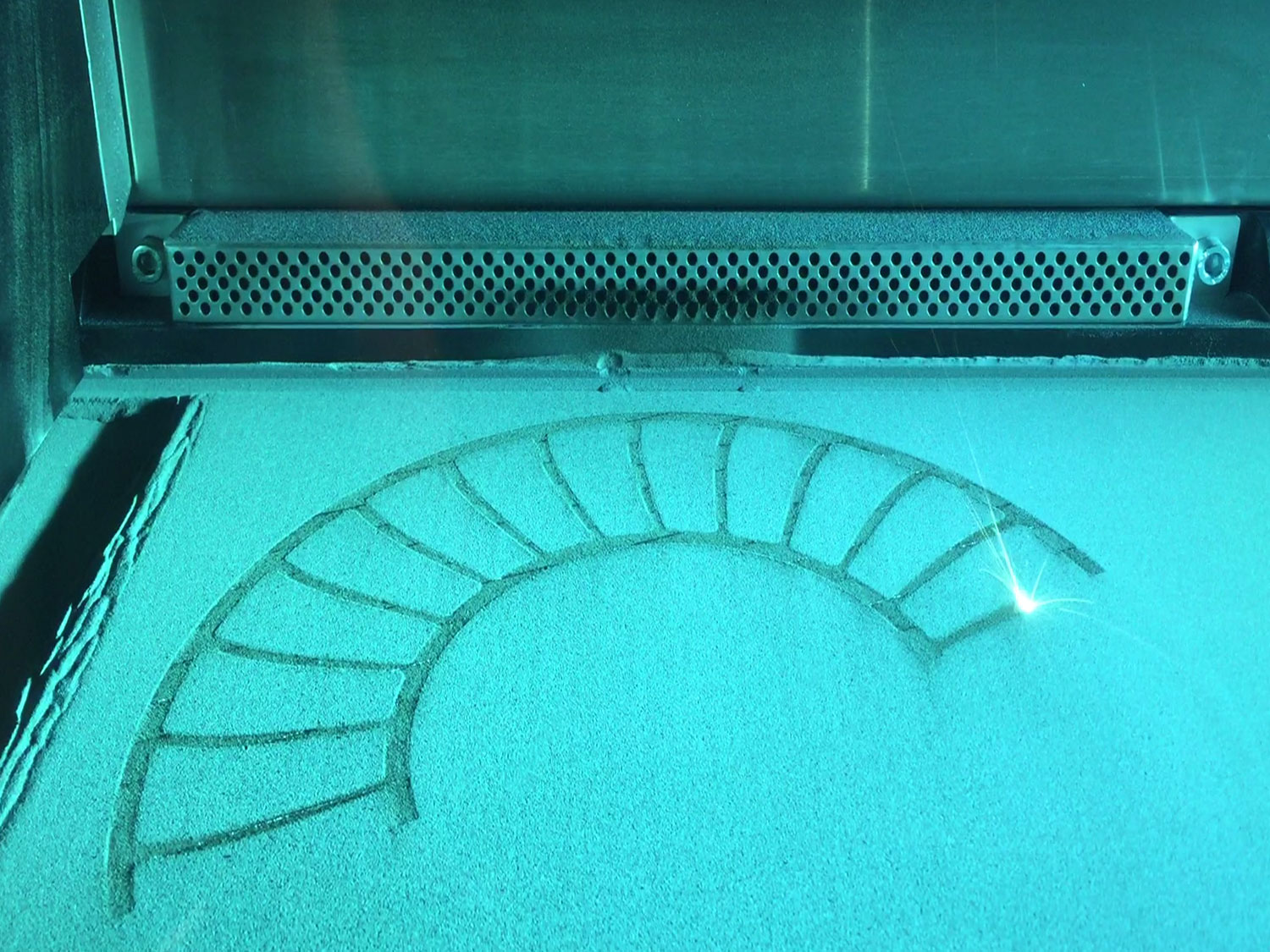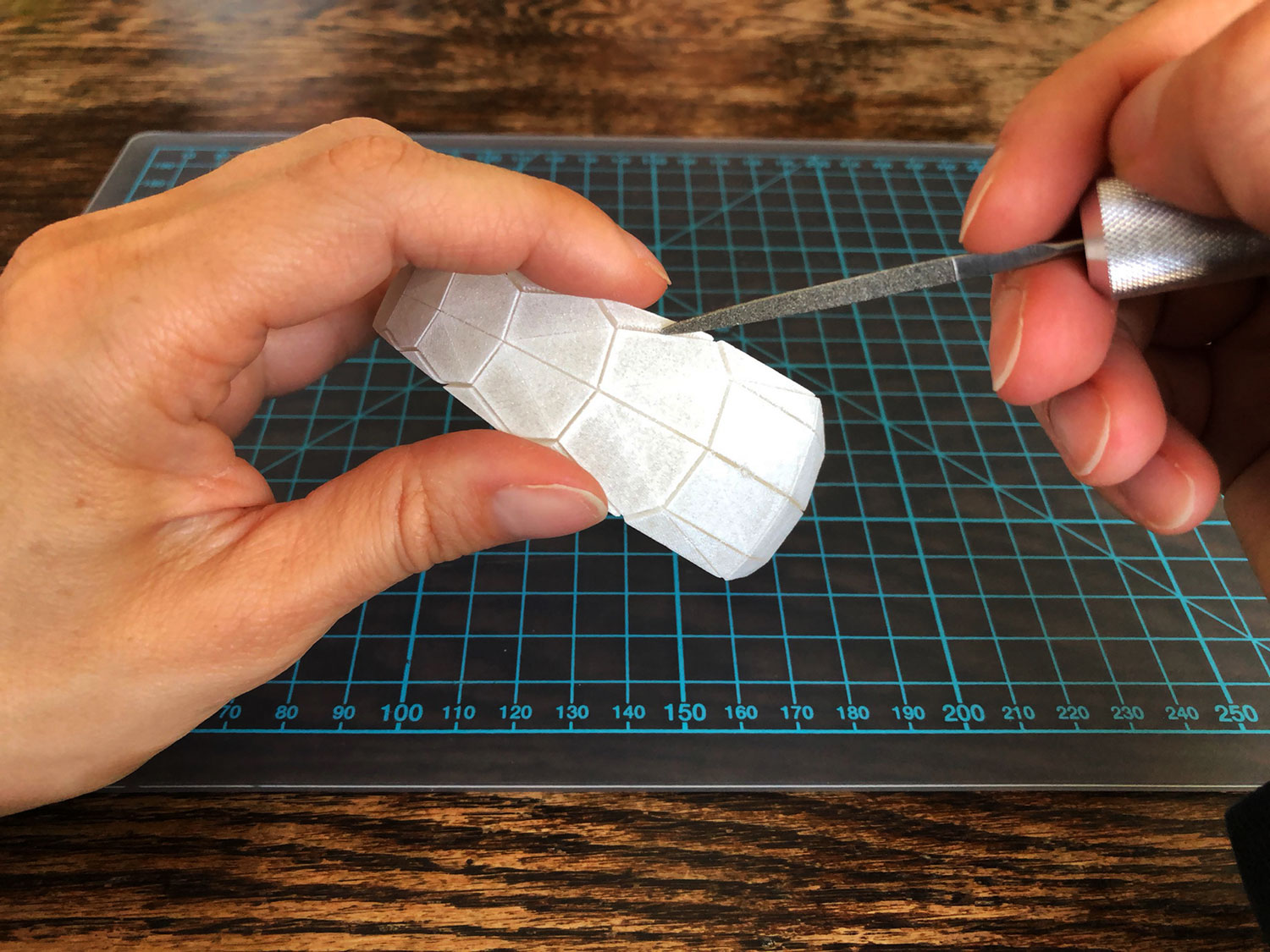Process
Every piece made by [ digimorphé ] is created combining innovative digital technologies with traditional craftsmanship. This section gives an insight into my creation and production process.
Sketching with software and code
My designs can originate from a sketch on paper, a 3D scan, an idea, or a client’s wish. I use different advanced computer-aided design software to create digital models. Especially I experiment with code, playing with numbers and variables to find new shapes. I not only design single objects, but program whole systems with sets of rules that enable the exploration of vast design spaces as well as the creation of families of objects where each piece is unique. With coding I create my own tools and can implement parametric, generative and algorithmic design strategies.
Prototyping with desktop 3D printers
The desktop 3D printers I use to materialize the prototypes of my designs are essential tools in my practice. Even if I can precisely see and measure everything on the computer screen, I find it indispensable to hold a physical object in my hands while designing. For jewelry it’s also very important to have the possibility to test the fit and the proportions directly on the body. It’s crucial for my work to be able to switch continuously from the digital to the material and back.
Producing with professional 3D printers
[ digimorphé ] products highlight the characteristics, aesthetics and possibilities of digital fabrication. The final pieces are produced with professional grade 3D printers. I use different technologies, machines and materials. For example, the pieces made of a polyamide and aluminum blend are produced via Laser Sintering, fusing the material in powder form into a solidified state with a precision laser, layer by layer. Some of the metal objects are produced via Binder Jetting, first gluing together layers of steel powder with a binding agent, and later infiltrating the object with bronze in a multistep process. Jewels in bronze, silver or gold are first 3D printed via Stereolithography and afterwards casted in metal using the traditional lost wax technique.
Finishing with handwork
All pieces by [ digimorphé ] involve skillful handwork. 3D printing requires extensive manual labor: objects have to be cleaned and freed from the unsolidified build material of the printing process, the support material or the sprouts must be carefully removed manually. Depending on the material, the finishing requests many different steps as sanding, polishing, dying, casting, coating and applying a patina. This tasks demand considerable amounts of time and the use of traditional handcraft methods. The combination of the dexterity of the machine with the intelligence of the hand makes each piece unique.
![[ digimorphé ]](http://images.squarespace-cdn.com/content/v1/51da6e83e4b097d8da5fb207/1587026587862-7Q96ZF4BV1WTXHX2K66Q/Squarespace_Logo_200416.png)



